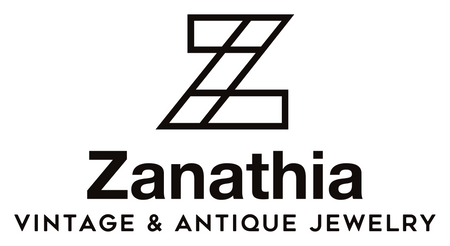Initially, monogrammed signatures were reserved for royal coins that identified ancient Greek and Roman diplomats from various regions. However, by the 19th century, it was common for many Victorian citizens to own a sentimental memento with initials carved into gold- and silver-plated accessories. Beforehand, monogrammed items were used to identify the work of local artisans and organizations synonymous with regional kingdoms. However, initial engravings on necklaces were common, with the famous Anne Boleyn 'B' choker-style accessory seen in various paintings of the British Queen. The decorative trend of signature mementos became increasingly popular during the Victorian Era (1837-1901), and could be seen on lockets, signet rings, sewn into garments, silverware, and other metal-based novelties.


Monograms and engravings were created by hand before machine production was invented during the first Victorian Industrial Revolution. Manufacturing became a significant industry and increased the quantity of monogrammed items. Soon, various business jewelry firms were offering engraved metal pieces with diverse signature styles and designs. Many monogrammed jewelry pieces were given as sentimental gifts, including a compartment for a loved one's photos or a locket of hair strands. Many Victorian Era jewelries with signature engravings and monogrammed initials were reserved for gold- and silver-plated items. It is common to come across monogrammed pieces with engraved names and patent dates on the inside of the jewelry. Lockets for necklaces, class rings, brooches, and expandable bracelets were highly in demand. Many of these items are attached to personal stories and memories, which include special occasions and celebratory gifts. By the late 19th century, historic companies such as Sears, Roebuck, and Co, The D.F Briggs Company, McRae and Keeler Co., and Theodore Foster and Company all were manufacturing high-quality monogrammed pieces.

Historically, the monogrammed aesthetic has been used for centuries. However, it was not until the 19th century that decorative purposes became famous. Nowadays, signature engravings on accessories are used for unique personalized gifts and sentimental mementos, which all derive from Victorian Era traditions. Many modern designs can be linked and traced to antique styles, which have become increasingly popular in today's market. Thankfully, many genuine monogrammed jewelry pieces have been historically preserved and in excellent condition. The initials and engraving designs are essential pieces of history, which include sentimental memories that belong to people of a bygone time. When collecting and curating antique monogrammed pieces, it is always intriguing to ponder the lives and stories to which a personalized gift once belonged.

